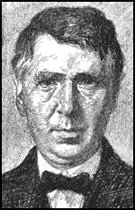George Morrow

George Morrow, one of eight sons, was born in Belfast in 1869. He was apprenticed to a sign-painter, he later studied art at the Belfast School of Art and in Paris.
Morrow began work as a book illustrator in 1896. He also began to contribute to The Bystander, The Pall Mall Gazette, The Strand Magazine, The Tatler, The Idler and The Windsor Magazine. He also illustrated a book for Edward Verrall Lucas. The two men got on well together and in 1906 Morrow began to illustrate Morrow's articles in Punch Magazine.
Cyril Bird claimed that Morrow was an artistic descendant of his compatriot Doyle, and used a gentler and quieter version of the same artistic brogue." Edmund V. Knox added: "Nobody could put so wistful an expression into the faces of lions, elephants, dragons and ppterodactyls, whose artless ways he seemed to consider rather more deserving of compassion than human foibles."
Morrow joined the staff of Punch Magazine in 1924. Morrow tended to concentrate on drawing people and gave particular emphasis to gesture and facial expression. For many years Morrow produced Royal Academy Depressions, a series of comic perversions of Royal Academy pictures. He replaced Frank Reynolds as Art Editor in 1930. He held the post until Cyril Bird took over in 1937.
Morrow also illustrated several children's books including Elnovia (1925), Cinderella's Garden (1927), Chuckles (1927) and Here Be Dragons (1930).
George Morrow retired to Thaxted, Essex, where he died on 18th January 1955.
